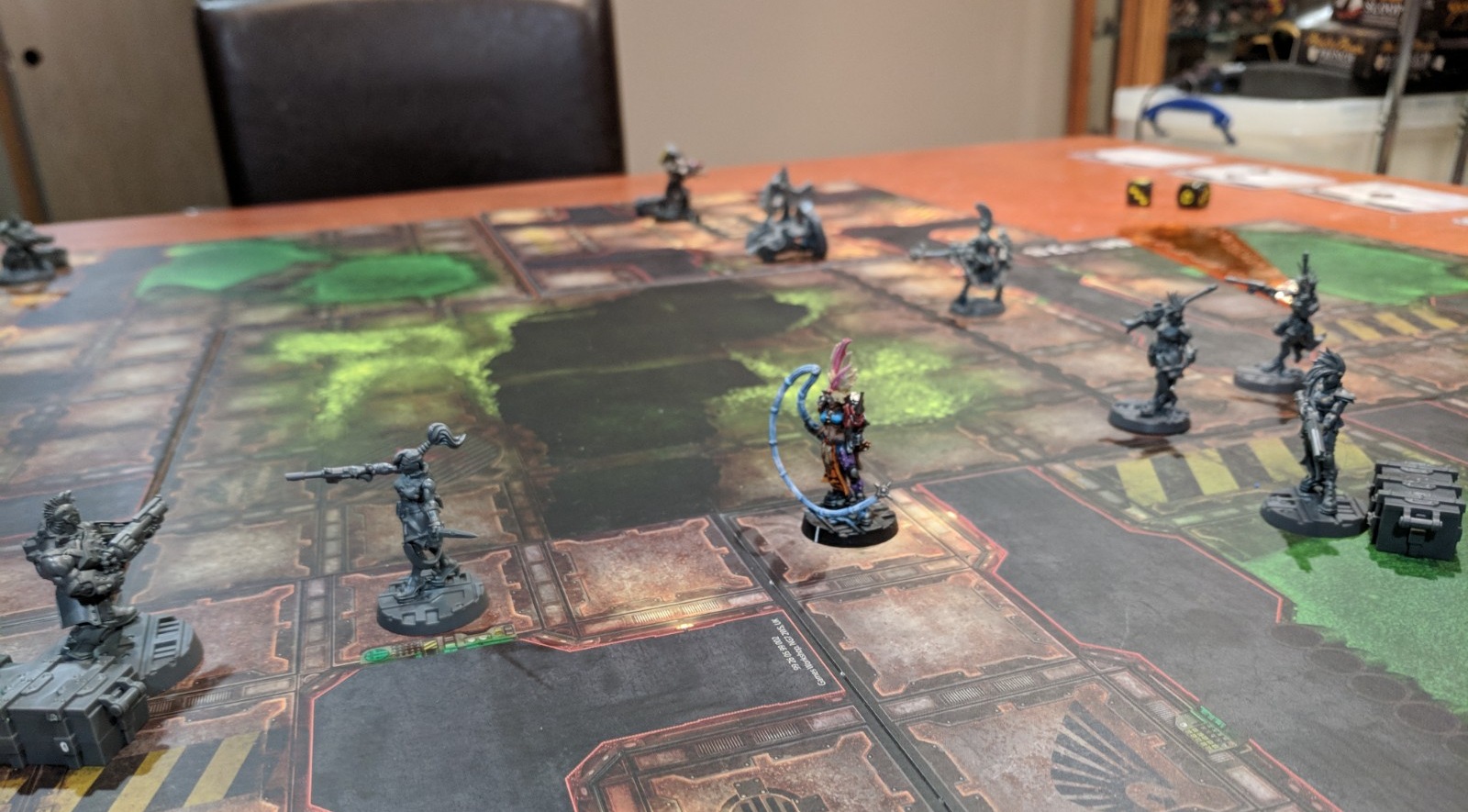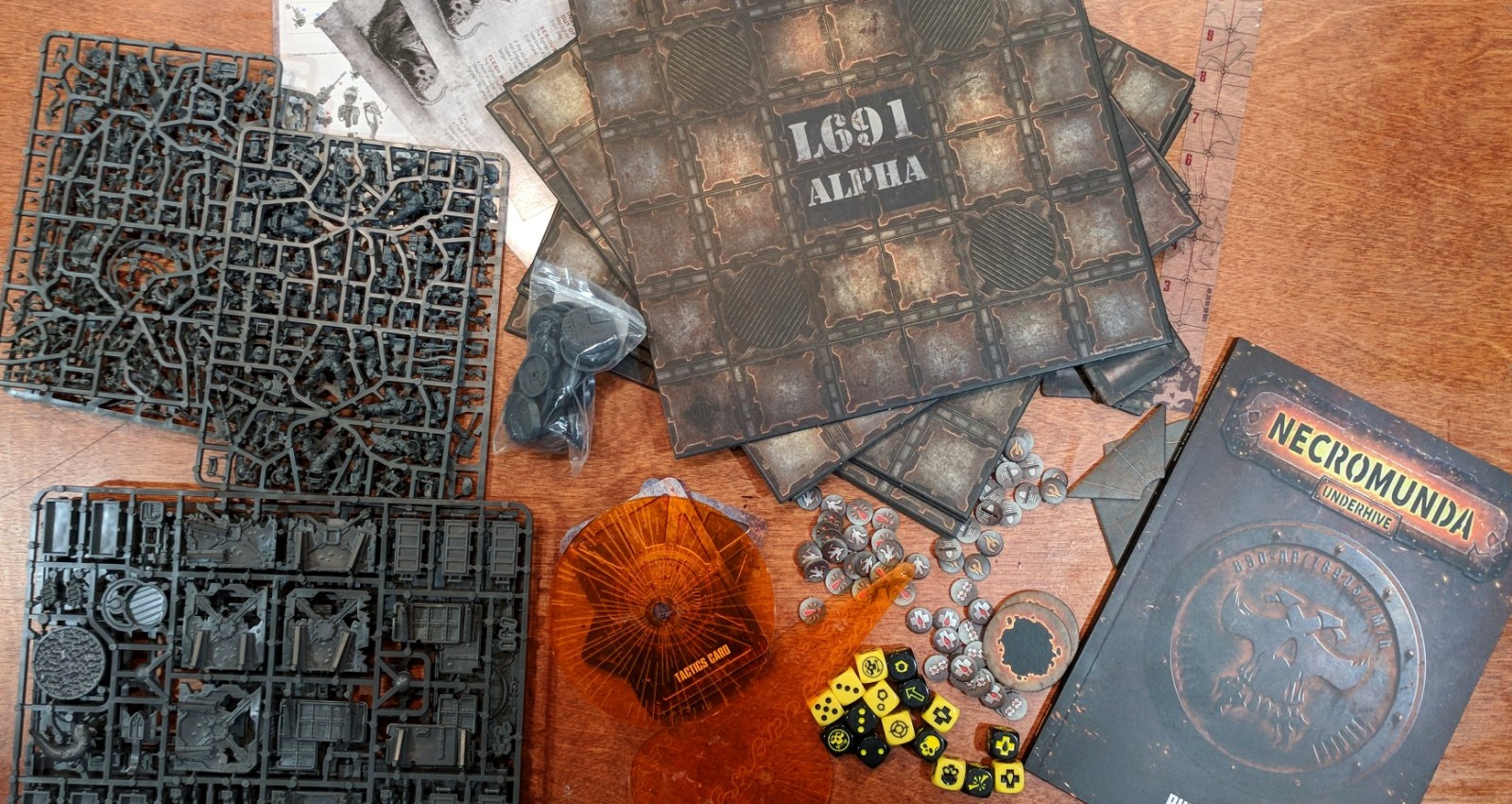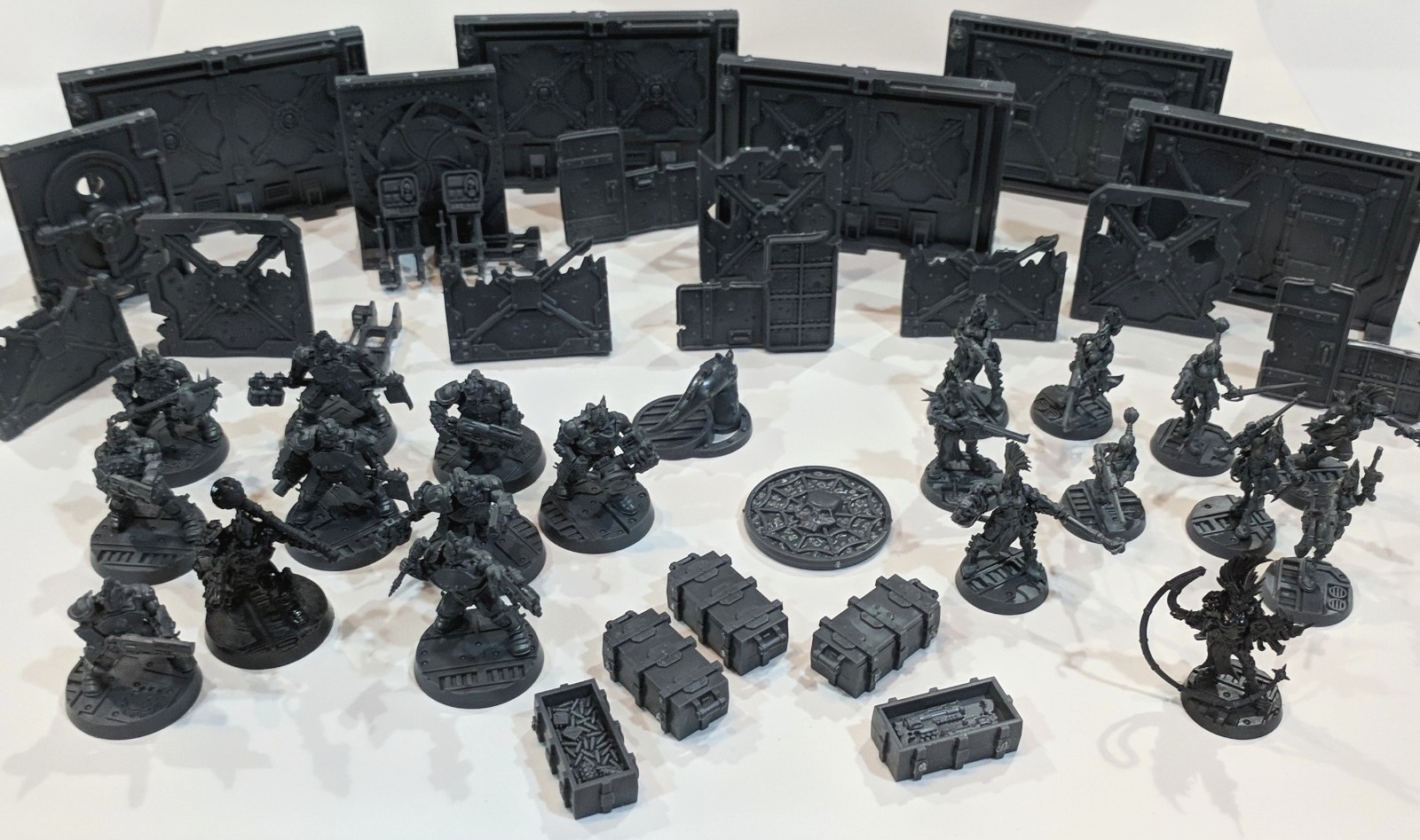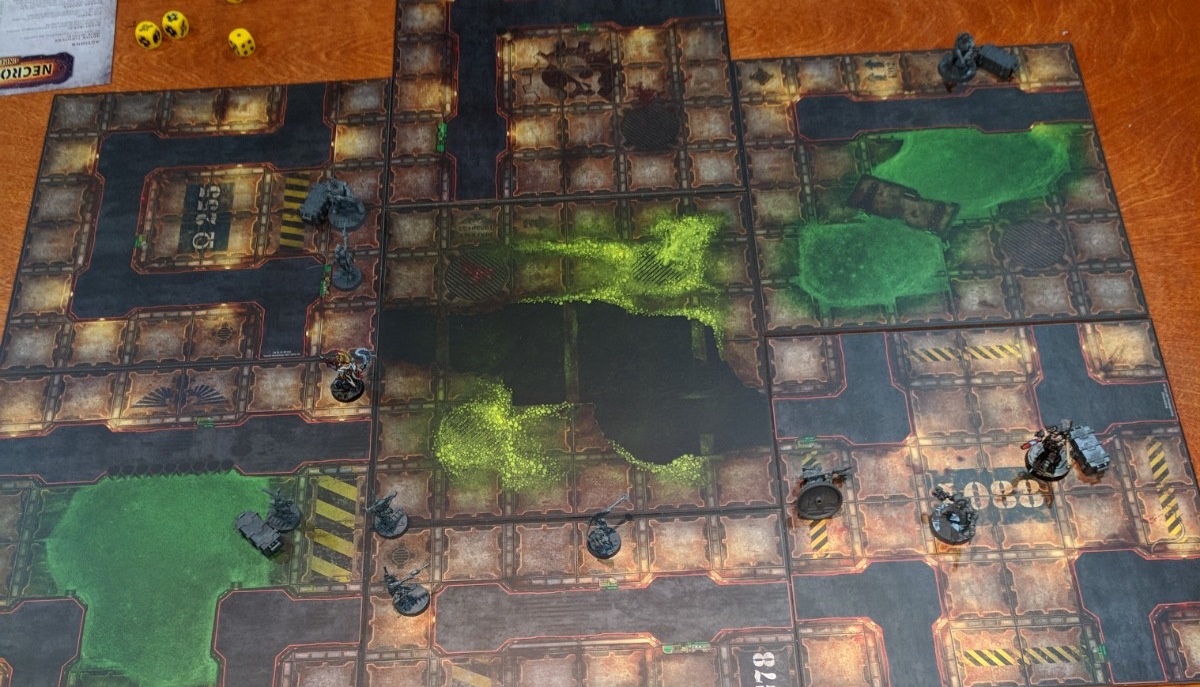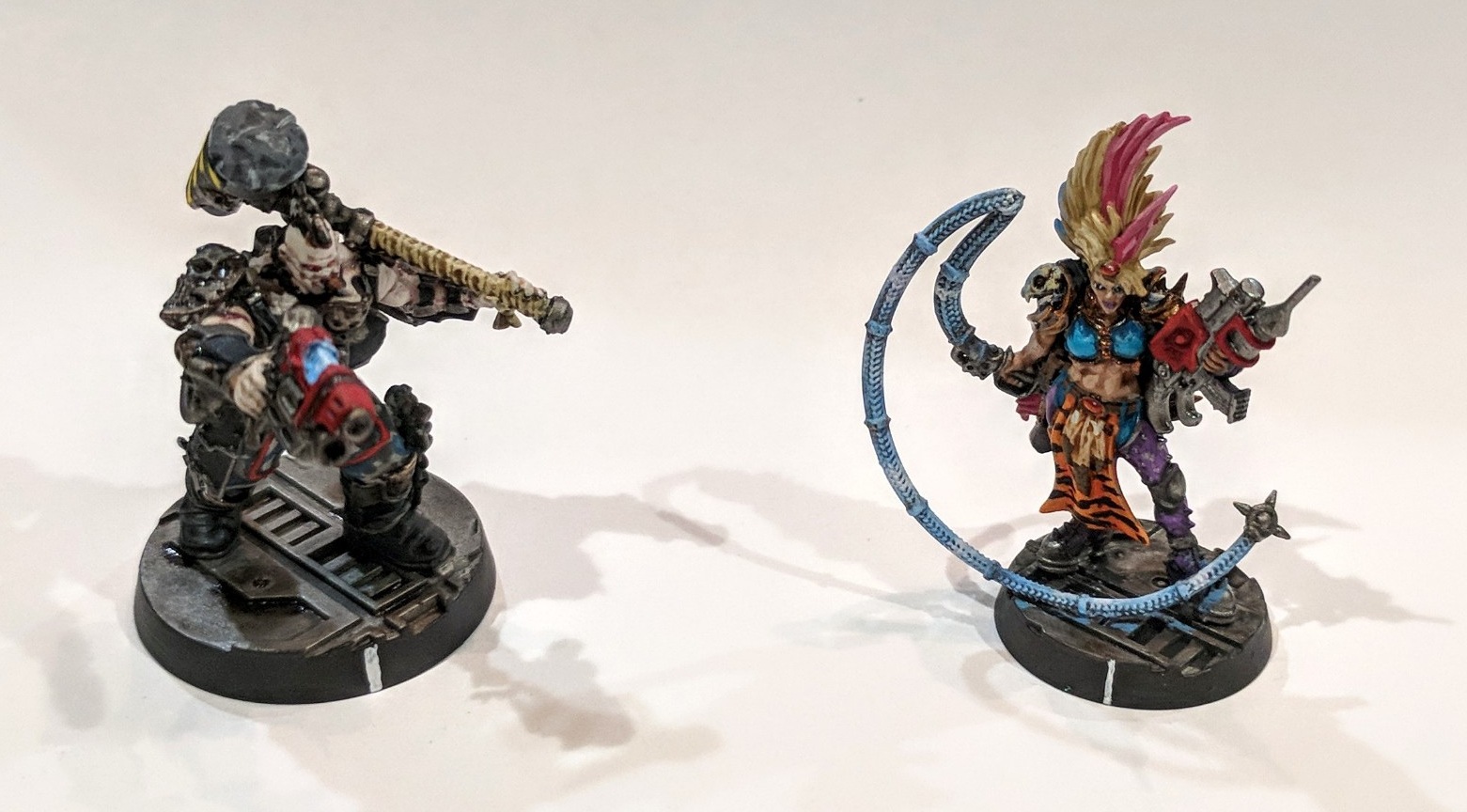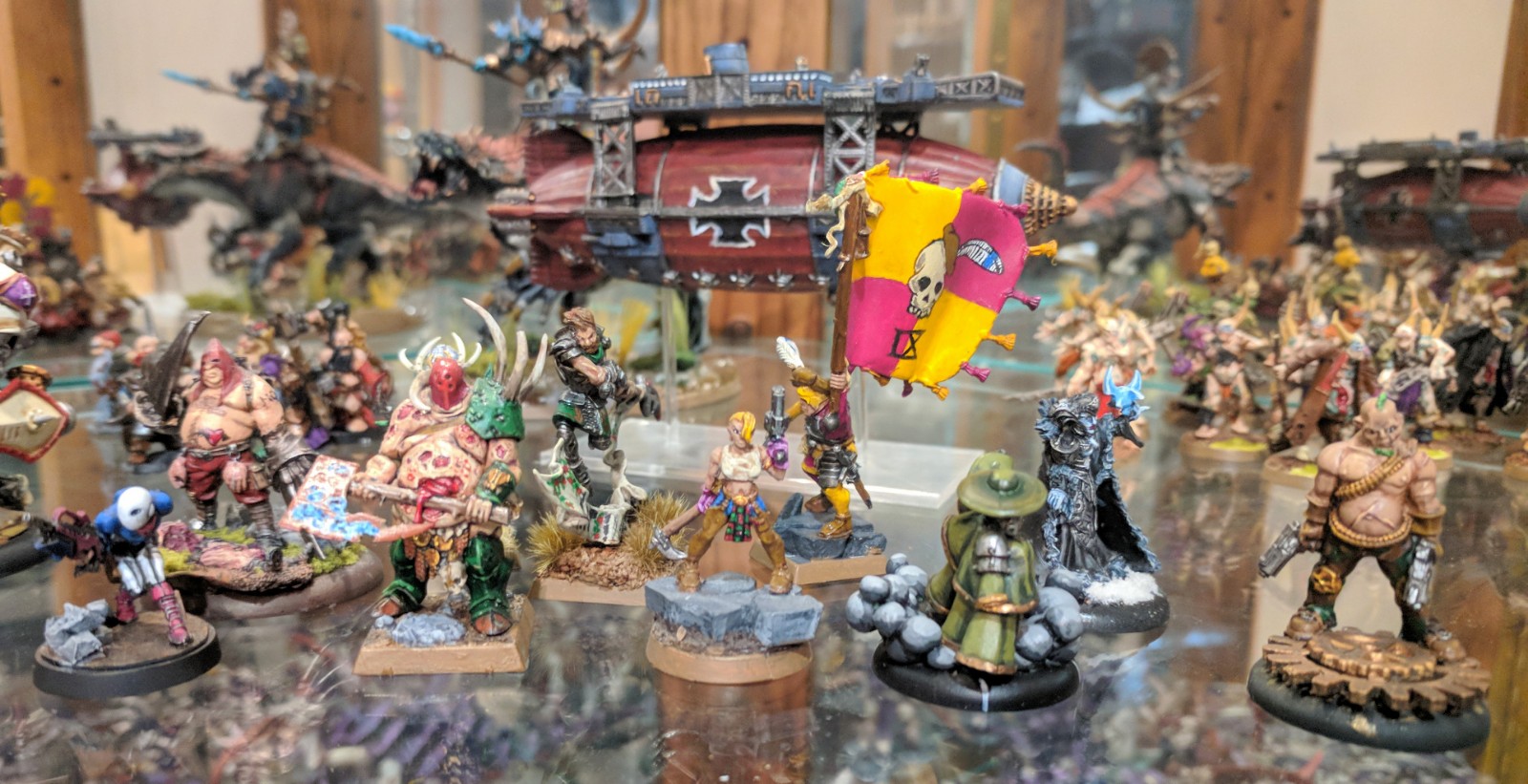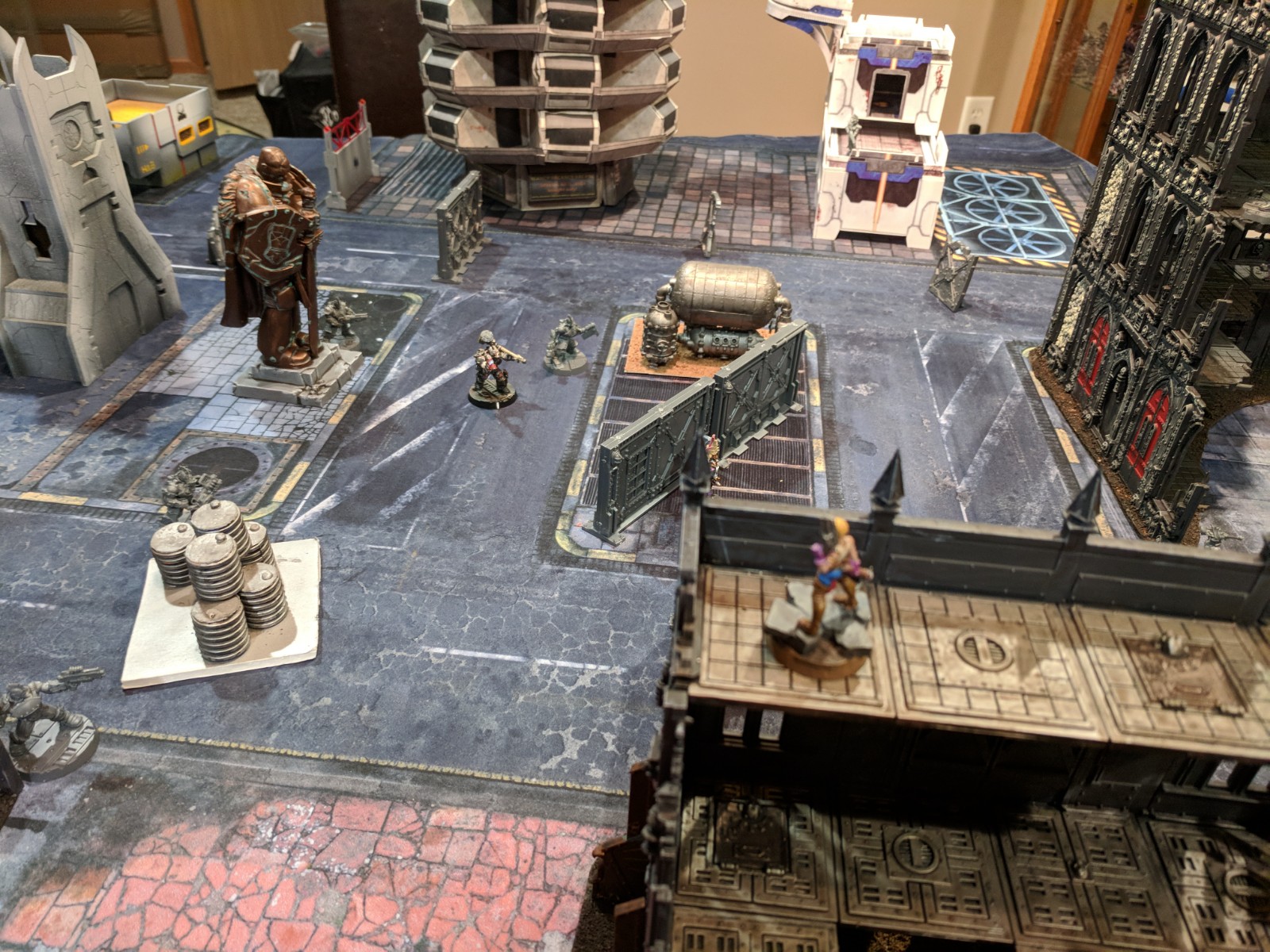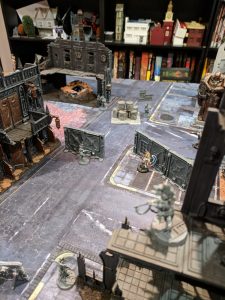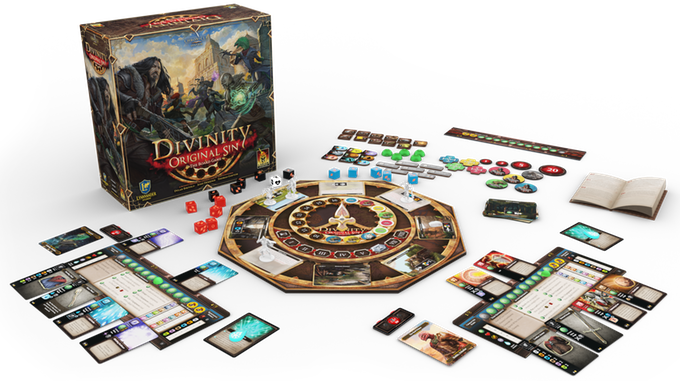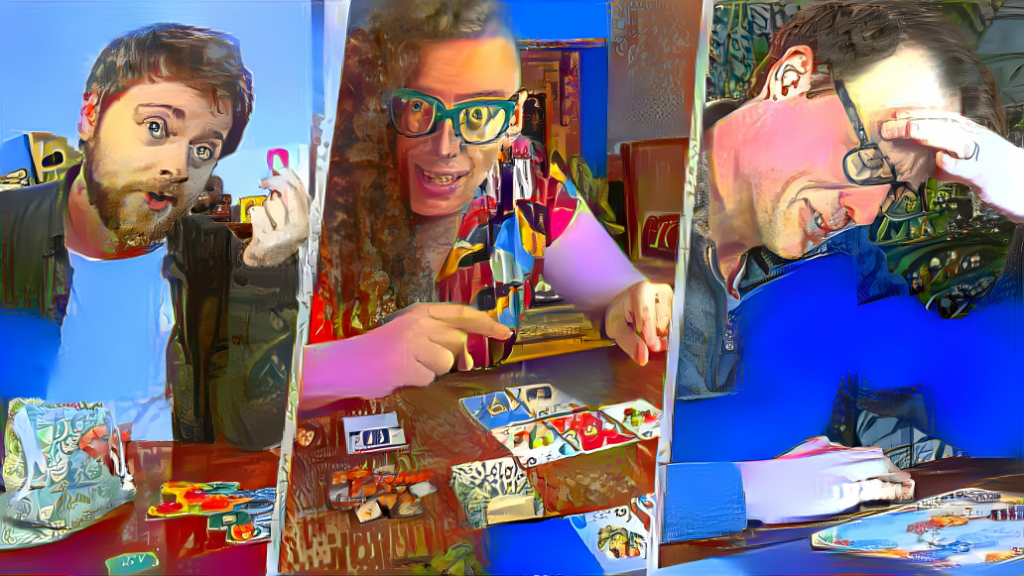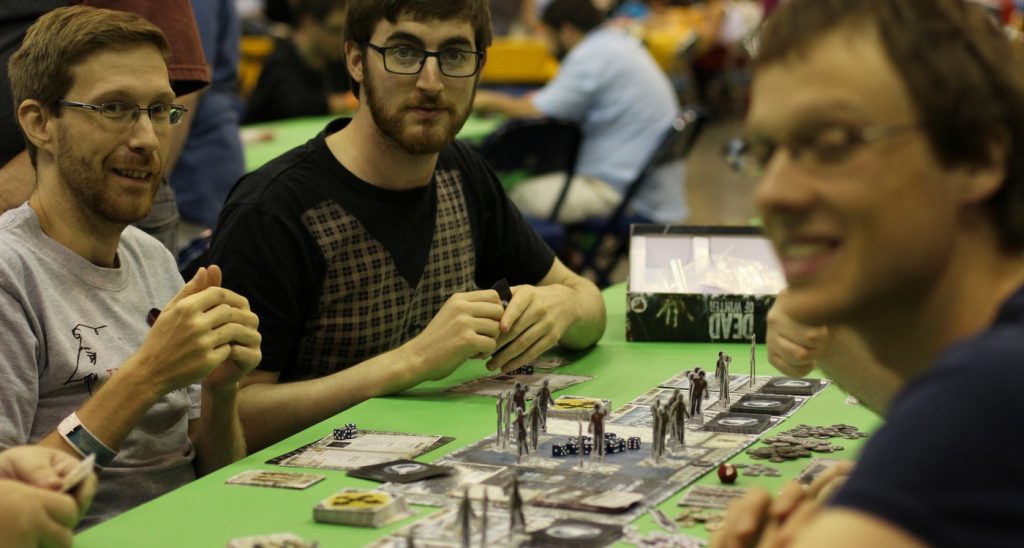[We once again welcome SU&SD miniatures correspondent Eric Tonjes for a report from some far-flung warzone. If you’ve not yet caught up on his work for us, do so on the double!]
Eric: A few years ago I had the chance to revisit the grade school I attended as a child. It was a jarring afternoon. The huge hallways were suddenly kind of small. I could see over the bookshelves in the library where I used to get lost. The teachers… several of them were younger than me. I walked in the door feeling nostalgic; I left a bit unsettled.
I found myself remembering that visit as I got ready to open Games Workshop’s new remake of Necromunda. A skirmish game set in the collapsing underbellies of hive cities in the Warhammer 40,000 universe, the original Necromunda one-upped the grim darkness of the 41st millenia by adding gangs, drugs, slavery, abject poverty and child soldiers. To a 15-year-old me, it was a thing of glorious joy. Yet I wondered, would this turn out to be just another narrow-halled school with five-foot bookshelves?
At least opening the box wasn’t a disappointment. The new Necromunda is a big, gorgeous game. The miniatures are definitely for hobbyists – in an age where most game are preassembled and sometimes even prepainted, here are gangers in 10 pieces to be cut from the sprue. The heads come in two parts! Yet they are gorgeous, with creativity and a level of detail that prove why Games Workshop is still the sovereign of the miniatures kingdom.
The box is also generous with other components. There are ruined barricades and bulkheads, objective markers, high quality cards, and even modular boards. The walls on said boards create the corridors of the trash-choked, terrain-rich underhive without your needing shelves full of plastic buildings. The original Necromunda was a cardboard and pewter affair, so at least in regards to components, this was definitely an upgrade.
The test, though, was going to be in the gameplay. I had been a timid, fresh lover of miniatures games when we first met. Years spent with skillful, boundary-pushing companions left me nervous. Would I realize those first nights Necromunda and I spent together were actually clumsy and awkward?
On one level, after a couple of games, I discovered the answer was sadly yes.
Games Workshop, in its recent remakes, seems dedicated to preserving not only the core look and experience of its games but also the core mechanics. In some ways this is fine – they work, and they have the added benefit of making games easy to move between. Yet as much as part of my wishes I could defend them, many of those mechanics are just bad, as team SU&SD found out last year while exploring the latest edition of Space Hulk.
Take combat. In Necromunda, a single attack ends up being decided by at least five separate rolls of the dice. You roll to hit. You roll again to wound. Alongside the roll to hit you roll an ammo die – if that goes badly, you check to see if the gun has run out of ammunition by – you guessed it – rolling again. Then there is the armor save, made by your opponent, and then a separate check to see how badly wounded they are. Warhammer 40,000 has a reputation for dice-chucking randomness, and it has two fewer rolls in its combat resolution.
Going in I told myself that I wasn’t going to let this randomness bother me. It would just be what it would be. But there are so many games that do this so much more elegantly, I can’t help feeling like part of what Games Workshop mistakes for nostalgia towards older mechanics is really just an expectation of poor design.
So that was it, I thought. You can’t go back to your childhood. I was ready, 20 minutes in, to give up.
Right until all hell broke loose. I’m not going to recount the details – it involved a grenade deviation and other equally improbable events – but a couple things didn’t go my way and suddenly I went from winning handily to losing badly. My competitive side roared to life, I bent down and began concentrating, and suddenly I was back in the place I was as a teenager. I was caring. Die rolls weren’t annoyances; they were drama. I was visualizing the firefight. We got done, and we grabbed a couple beers, and we decided to play again.
I really can’t explain what happened in that moment. No, that’s not true, but to get at it, we need to zoom out and discuss something else first. So pull up your stool, ganger, and let’s talk about campaigns in games.
Back when Dungeons and Dragons was still called Advanced, before Fantasy Flight had first spread it’s wings and Legacy games weren’t even a twinkle in Rob Daviau’s eye, it was miniatures games where you often went if you wanted to play games linked into a larger story. This occurred first in big wargames with even bigger maps, players linking their chit-and-counter tank battles together into a grand narrative of conquest. It was the seeds of what sprouted into D&D’s roleplaying, and that in turn fed back into the miniatures world, birthing a slew of games with grand narrative ambitions. Games Workshop jumped on board this craze – Blood Bowl is one example of the way they welded a campaign system onto a game; Necromunda is another.
What that means mechanically is that, between games, your gang grows and changes. Wounded gangers might get injuries or even die. At the same time, others gain experience and get deadlier. Weapons and equipment become available to purchase, and turf of various types can be gained and worked for additional income.
What that means in terms of experience is something else entirely. Part of the magic of miniatures games has always been the way components get memories and personalities attached to them. What campaign games like Necromunda do is make that attachment a feature rather than an accident.
Here’s a picture of a little section in one of my display cases. All of the miniatures you see are from factions in games I don’t play anymore but who I still like to keep around because of the stories they represent.
Right there in the middle of that group – do you see the girl with the pistol? That’s Lyv, a member of my Escher gang back when I first played Necromunda a decade and a half ago. (Lyv is exactly the kind of name 15-year-old Eric thought sounded like a badass lady. I’m sorry.) She was a “juve” – a teenager – and she was a genius.
Between battles she gained a few abilities, none of which made her any better on the battlefield, but all of which made her invaluable to the gang. She was a medic and an inventor, creating gizmos and patching up our wounds. She was a significant part of the reason the Helcatz (again, I’m sorry) were so feared.
Which meant she had a target on her back. It began to drive whole games. My opponents started ignoring actually winning games in favor of killing her. She fell in a battle and was subsequently captured, so I spent another whole battle going to rescue her. When she finally took a chainsword to the chest and was with us no longer, I felt a moment of real grief.
All of that narrative happened within some pretty rudimentary campaign rules, but it made the game something transcendent. We started caring about our miniatures, knowing any fight could be their last. It’s as if, just by having such a campaign, Necromunda’s individual battles felt more meaningful and immersive.
To be clear, that campaign system is still present in the new edition, although I haven’t gotten to play it. You do have to buy a separate supplement book for it, and there are some issues – while they are streamlined in some good ways, they’ve also eliminated a lot of the complexity that allowed for such crazy emergent storytelling. Also, as a sort of de facto acknowledgement that the rules still aren’t especially well-balanced, the book now strongly encourages you to keep campaigns to a fixed (short) length, ensuring nobody gets too big an advantage.
Yet I read through those rules and I got this strange itch in the back of my brain. I wanted to play this thing as a campaign. I reviewed the couple games we had played and started figuring up how many experience points different models would have gained. I looked at the turf and upgrades I could buy for them. I longed to see what tales emerged from these systems and charts.
Do I sound conflicted? It’s because I am. On the one hand, I expected Necromunda to have significant problems and it totally did. On the other hand, the magic really does still seem to be there. Is it just nostalgia that I’m feeling? Is the campaign just that same post-capitalist drip of hoped-for rewards that keeps people grinding at MMOs and opening video game loot boxes? Maybe – but I’m not sure.
Necromunda was never a great game, even when it was first published. Not in any sense of polished design. Yet it wasn’t great design that inspired such love among those who played it 20 years ago. It was a special fusion of storytelling and luck and aesthetics and rules that provided this narrative structure with a visceral emotional payoff. And it still trips those dopamine centers like it always did.
So I don’t know what to think. Indeed, looking over my notes as I try to decide, I feel like I’m torn on everything.
For instance: who is Necromunda for? Who would I recommend it to? It’s a good intro game for those outside the hobby, except that it’s probably too clunky and overcomplicated. The people who will really enjoy it are those with massive terrain collections with which to populate their underhives, yet I struggle to believe it will hold the long-term interest of hardcore wargamers, especially when the field is more cluttered with great games than ever.
Campaigns are still the main event, and all the ingredients for awesome stories and exciting character growth are there. Yet so is the randomness, the potential disappointment, and the reality that your gang is one or two permadeaths away from being trash. Also, support is really limited at the moment. The starter box is great, but it’s two gangs plus one more on the way are nowhere near the dozen factions in the original. When you consider that you need 5-6 people to play, you’re going to be seeing a lot of the same models for quite a while.
Even the question of representation in the game is complicated. There are women in Necromunda, and they aren’t dolled up male fantasies but tough-looking punk rock warriors. Half the gangers available for the game at launch are women. Wonderful! Yet that’s because gender is the theme of one of the gangs, and there are no more women in the soon-to-be-released gangs. Treating the super-muscular gang, the gun-obsessed gang, the religious-masked-zealots gang and the feminine gang as equally wacky doesn’t exactly scream empowerment.
So I feel like I should tell you to give Necromunda a pass. Yet that feels wrong, and not because of nostalgia, but because of how much fun I’ve been having with it. There’s a sheet at a game store I visit asking about interest in playing in a campaign, and my name is on that sheet. Even though it means I’ll be sacrificing time playing games I think are better to do it.
Because here’s the real issue: I know what would have happened if you had walked up to 15-year-old me and said everything I just did. He would listen, and then he would tell you where to shove your criticism, and then he would get back to playing. After all, it was fun and exciting and he wanted to see whether Lyv would survive the next battle. Is it really fair for me to dismiss a game I’ve actually enjoyed quite a bit simply because it isn’t as elegant or “good” – whatever that means – as games I’m apparently less interested in playing? Is that the objectivity of good criticism or the snobbery of elitism?
I hope, from all that, you have some sense for yourself. If you read all of that and you don’t feel the spark, that’s fine. If you want a skirmish game that has excellent rules, try out Infinity or Bushido or Malifaux or the Batman Miniatures Game or a dozen other offerings we haven’t had the chance to review here. That’s probably the “correct” response.
That said, I secretly hope that some night I round a dark tunnel beneath a manufactorum, clutching my lasgun to my chest, and bump into you there. We’ll be smiling as we do our best to gun each other down.

